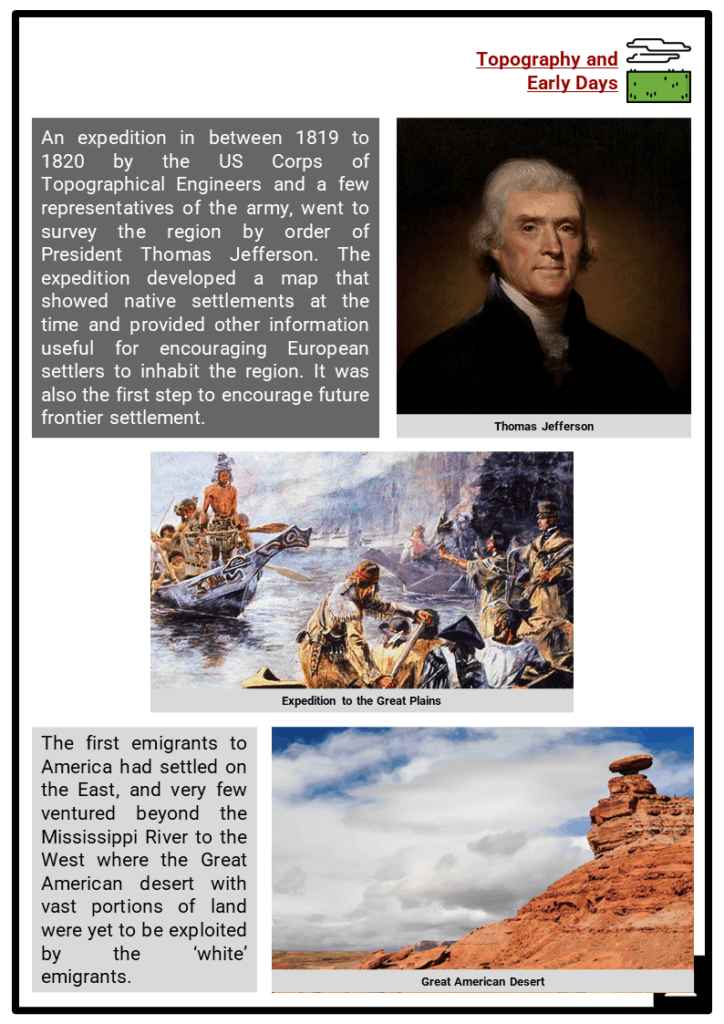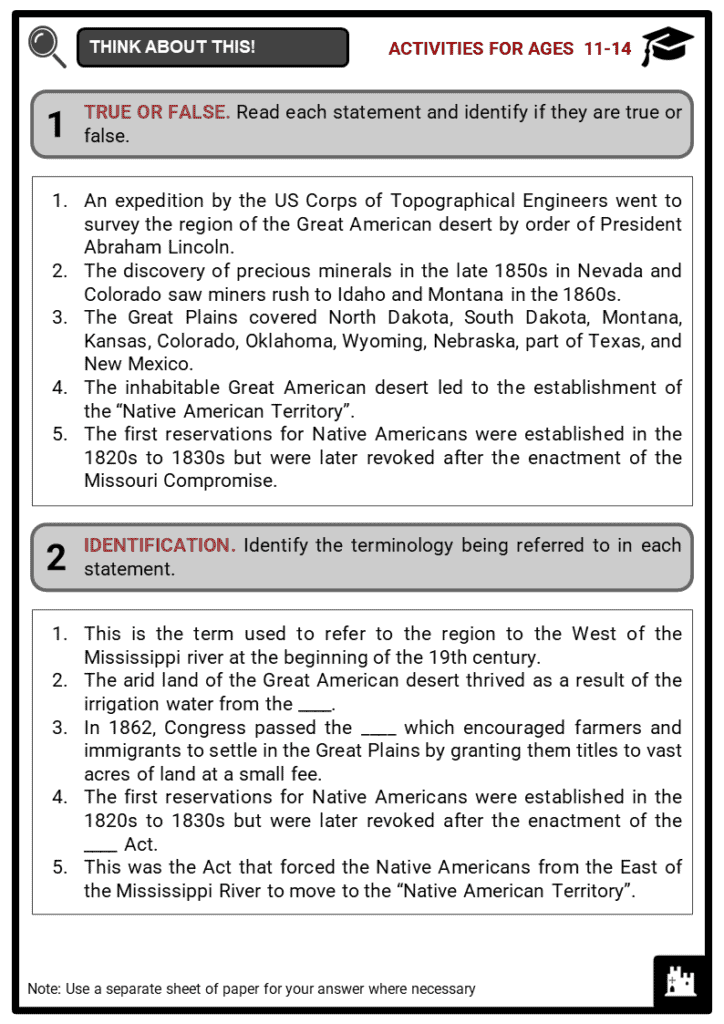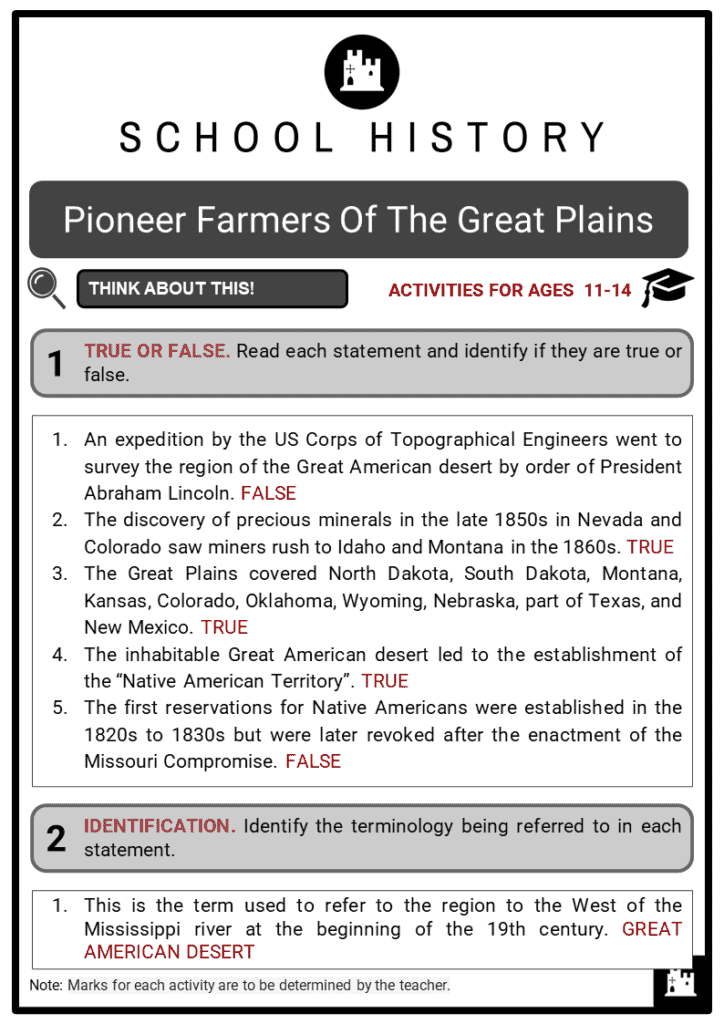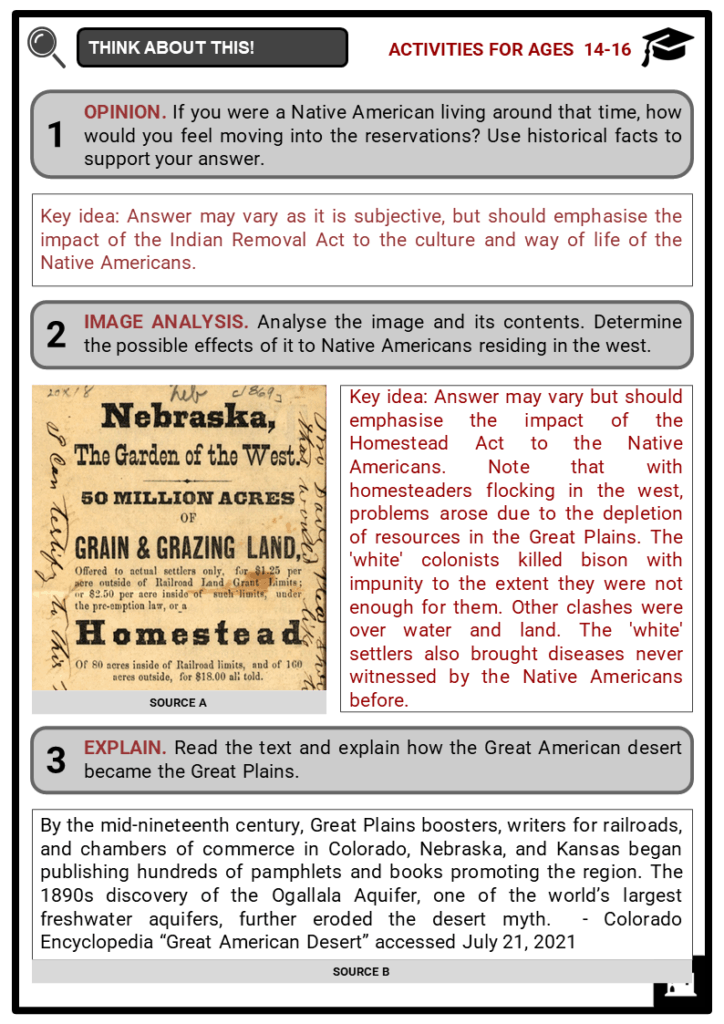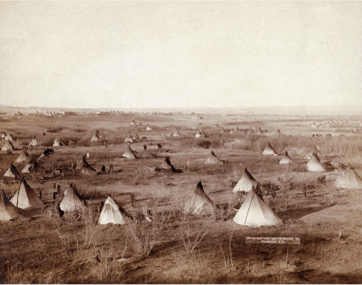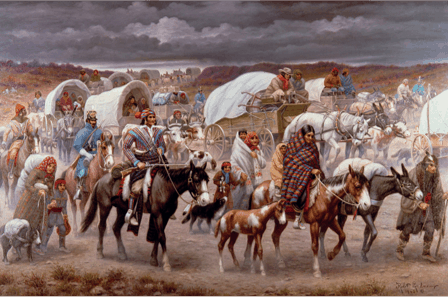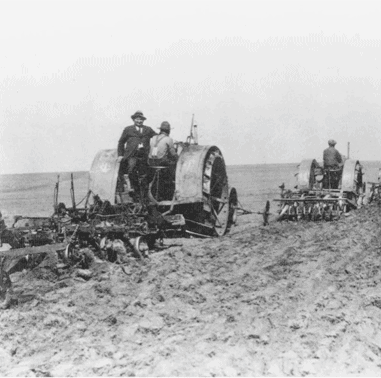Download Pioneer Farmers Of The Great Plains Worksheets
Do you want to save dozens of hours in time? Get your evenings and weekends back? Be able to teach Pioneer Farmers Of The Great Plains to your students?
Our worksheet bundle includes a fact file and printable worksheets and student activities. Perfect for both the classroom and homeschooling!
Table of Contents
Add a header to begin generating the table of contents
Summary
- Topography and Early Days in the Great Plains
- Farming in the Great Plains
- Alienation of the Native Americans
Key Facts And Information
Let’s find out more about The Pioneer Farmers of The Great Plains!
- The topography of the Great American desert was arid, flat with very few trees. Before the 1860s, the region was considered unfit for farming and uninhabitable by the European settlers. In the 1890s, the Ogallala Aquifer was discovered, and it became the primary source of water in the Great American desert, now called the Great Plains. In the short period spanning about five decades, over three million families had settled in the region.
Topography and Early Days
- An expedition in between 1819 to 1820 by the US Corps of Topographical Engineers and a few representatives of the army, went to survey the region by order of President Thomas Jefferson. The expedition developed a map that showed native settlements at the time and provided other information useful for encouraging European settlers to inhabit the region. It was also the first step to encourage future frontier settlement.
- The first emigrants to America had settled on the East, and very few ventured beyond the Mississippi River to the West where the Great American desert with vast portions of land were yet to be exploited by the ‘white’ emigrants.
- The geographical area that the Great American desert covers has over time slightly varied depending on the historical timelines. At the beginning of the 19th century, the region to the West of the Mississippi river was known as the Great American desert.
- At this time, the people inhabiting the area were the indigenous/ native American tribes who occupied this part of North America well over 10,000 years ago. The native Americans took good care of the Great American desert ecosystem making good use of every resource without wastage.
- The source of food for the native Americans was the bison which also provided hides for the natives for shelter and clothing. Their bones made weapons and tools while their horns were used as utensils.
- The bison tails were used as whips, and the stomachs as containers to hold water. The Great American desert was home to herds of bison who roamed the plains. Other animals like the black-footed ferret, pronghorn antelope, foxes, deer, and grassland birds also inhabit the Plains.
- The primary source of freshwater in the region were streams and aquifers. Later on, around the 1890s, the Ogallala Aquifer was discovered and it became the primary source of water. The aquifer sits under eight states ranging from South Dakota to Texas and New Mexico. The early 1900s would see the people practice agriculture as Ogallala Aquifer was used for irrigation in the Great American desert.
- Over time, the area grew smaller as more people migrated and settled. Present day, the only places referred to as the Great American desert are the Nevada and Utah plains.
Farming in the Great Plains
- The inhabitable Great American desert led to the establishment of the “Native American Territory” where Native Americans from the East of the Mississippi River were forced to move after the enactment of the Indian Removal Act of 1830.
- Native American tribes were forced into reservations or promised lands that they would be able to keep in perpetuity. However, the first government kept amending its positions and pushing the Natives into smaller reserves in response to an insatiable appetite for land by the Europeans who realised that the Plains were suitable for farming and ranching.
- The discovery of precious minerals in the late 1850s in Nevada and Colorado saw miners rush to Idaho and Montana in the 1860s. By the turn of the 1860s, the region witnessed transformation to become America’s economic pivot upon establishment of rich mines as the area was rich in mineral deposits such as gold, silver, and copper. Thousands of people during this time moved West, towards this region leading to population growth brought by the westward expansion.
- There was an economic boom in this period that opened opportunities for farms, ranches, and railroad construction for further development. Ranchers in the Great Plains wrecked huge profits raising cattle.
- During this time the Great American desert was renamed, “the Great Plains.” It covered North Dakota, South Dakota, Montana, Kansas, Colorado, Oklahoma, Wyoming, Nebraska, part of Texas, and New Mexico. It also covered the grassland provinces of Manitoba, Alberta, and Saskatchewan in Canada estimated to be about half a million square miles.
- By 1890, it was announced that settlement in the West had surpassed expectations due to the rapid occupation to the extent that there was no more frontier line to be settled on in the Great Plains. In the short period spurning about five decades, over three million families had settled on the Plains.
Alienation of the Native Americans
- At first, the Native Americans allowed ‘white’ settlers into the Great Plains without resistance. Soon after, problems arose due to the depletion of resources in the Great Plains. The ‘white’ colonists killed bison with impunity to the extent they were not enough for them. Other clashes were over water and land. The ‘white’ settlers also brought diseases never witnessed by the Native Americans before.
- In 1862, Congress passed the Homestead Act which encouraged farmers and immigrants to settle in the Great Plains by granting them titles to vast acres of land at a small fee. More people settled in the Great Plains and tried to force the Native Americans out of it during what was known as the farming frontier.
- Reservations in the Great Plains were established to harbour the surviving Native Americans. These were territorial units retained by Native Americans tribes as their designated ancestral lands following their removal from the majority of it and cession of a huge portion of it to the majority ‘white’ American settlers.
- The first reservations for Native Americans were established in the 1820s to 1830s but were later revoked after the enactment of the Kansas-Nebraska Act of 1854. The Native Americans restricted themselves to small areas recognised in treaties, laws, or executive orders where they would self-govern.
- The Great American desert, now known as the Great Plains, flourished even more by the 1940s due to the invention of mechanised pumping to tap water from the now popular Ogallala Aquifer. The arid land thrived as a result of the irrigation water from the Aquifer. Agricultural production was, from thereon, high and on a large scale.
- Today, the Native American reservations are generally poor but abundant in mineral resources and obtain most of their revenues from casinos. Most of the Native American culture has been eroded but they still maintain burial sites for their ancestors and have sacred places. Some of their cultural heritage has been maintained.
- Modern day has witnessed a resurgence of the Native American population due to the job opportunities brought about by casinos in the reservations. The Native Americans have begun reclaiming some portions of the land in the Great American desert they were once alienated from. To date, the once Great American desert is revered as the breadbasket of America feeding its huge population.
Image sources:


